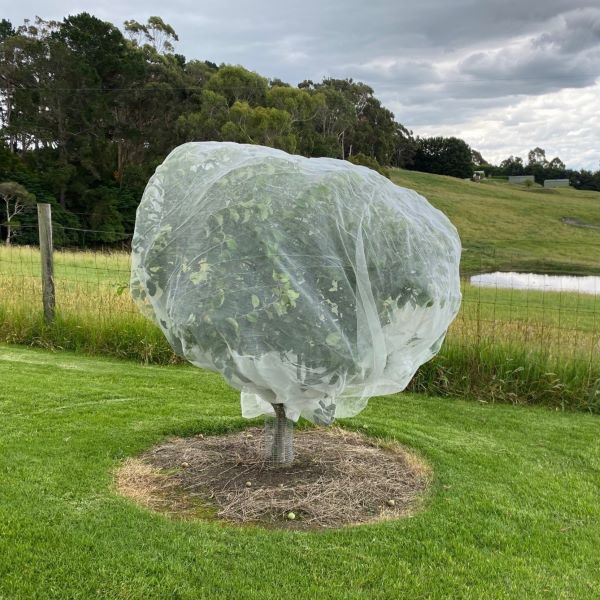Fruit flies can wreak havoc on your fruit trees, vegetable patches, and crops, reducing your harvest significantly if left unchecked. A reliable and environmentally friendly way to protect your plants is by using fruit fly netting.
Installing fruit fly netting may seem challenging, but with the right guidance, you can easily safeguard your garden.
 In this post, you will learn how to set up fruit fly netting and answer some commonly asked questions about its use.
In this post, you will learn how to set up fruit fly netting and answer some commonly asked questions about its use.
Step 1: Choose the Right Netting
Selecting the appropriate fruit fly netting is the first step. Here’s what to consider:
- Mesh Size: For fruit flies, choose netting with a fine mesh size of around 2mm or smaller. This prevents even the smallest pests from entering.
- Material: Opt for UV-stabilized and durable netting that can withstand Australian weather conditions. Sage Horticultural offers high-quality options ideal for gardens.
- Colour: Fruit fly netting is available in white and black. White netting is more reflective and blends well with outdoor spaces, while black is less conspicuous in urban areas.
Step 2: Measure Your Garden or Trees
Before purchasing your netting, measure the area you want to cover. Whether it’s an entire tree, a garden bed, or individual plants, ensure you buy netting that can provide complete coverage with some extra allowance for securing edges.
Step 3: Gather the Tools
To set up fruit fly netting, you’ll need:
- Support structures like poles, frames, or hoops.
- Pegs, clips, or ties to secure the netting in place.
- Scissors or cutters to adjust the netting to the correct size.
Step 4: Create a Frame
A sturdy frame is essential for keeping the netting off your plants and preventing fruit flies from entering.
- Use PVC pipes, bamboo stakes, or metal poles to create a structure around the plants.
- For larger trees, you can use hoops or drape the netting directly over the branches.
Step 5: Drape and Secure the Netting
Carefully drape the netting over the frame or directly over your plants or tree canopy.
- Ensure there are no gaps where fruit flies can enter.
- Secure the edges tightly to the ground using pegs, or weights, or bury the edges in soil.
- For individual fruits, you can also bag them using smaller pieces of netting.
FAQs
Can I Reuse Fruit Fly Netting?
Yes, high-quality fruit fly netting is durable and reusable. Simply store it properly when not in use, and it can last for several seasons.
Does Fruit Fly Netting Reduce Sunlight?
No, fruit fly netting is designed to allow adequate sunlight to pass through, ensuring healthy plant growth. It also provides some protection against intense sunlight, reducing the risk of fruit sunburn.
Can Fruit Fly Netting Be Used for Other Pests?
Yes, the fine mesh also protects against moths, butterflies (e.g., cabbage moths), and birds, making it a versatile pest protection tool.
Can I Water My Plants Through the Netting?
Yes, water can pass through most fruit fly netting, so you don’t need to remove it when watering.
What Plants Can Be Protected with Fruit Fly Netting?
Fruit fly netting is ideal for fruit trees (e.g., citrus, stone fruits, and apples), vegetables (e.g., tomatoes, zucchinis), and berries (e.g., strawberries, blueberries).
When Should I Use Fruit Fly Netting?
Install fruit fly netting before fruits start ripening, as this is when they are most vulnerable to fruit flies.